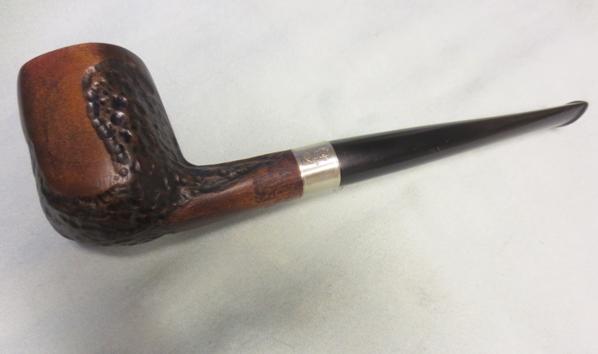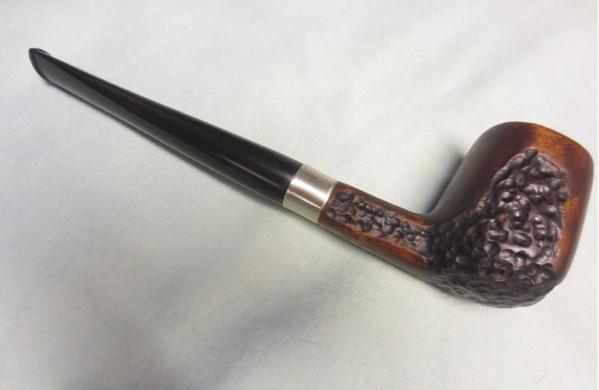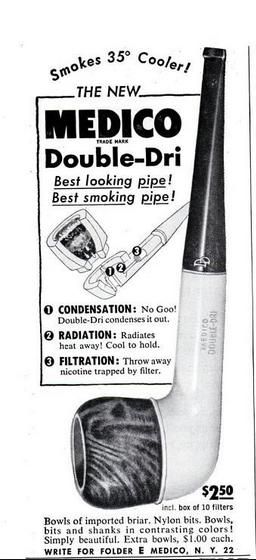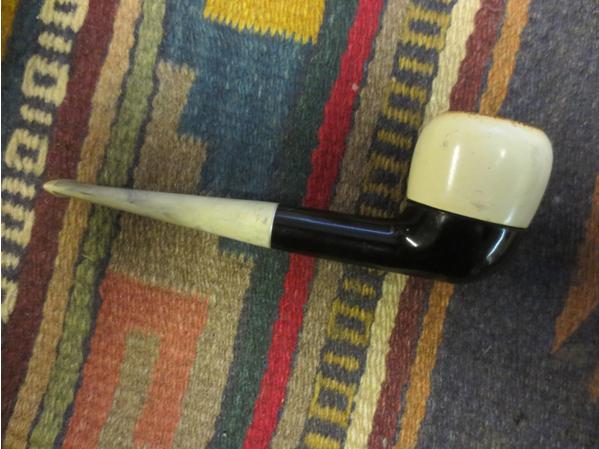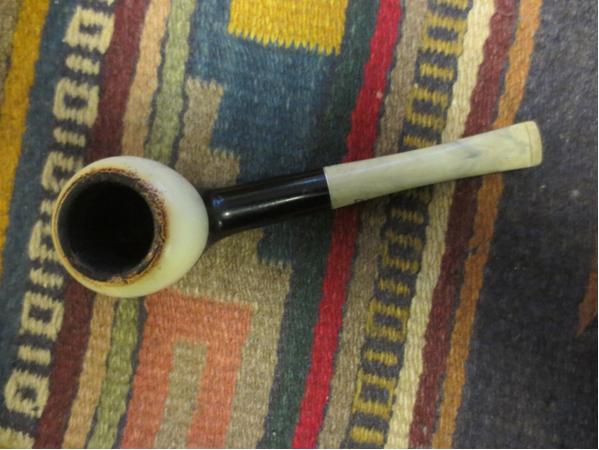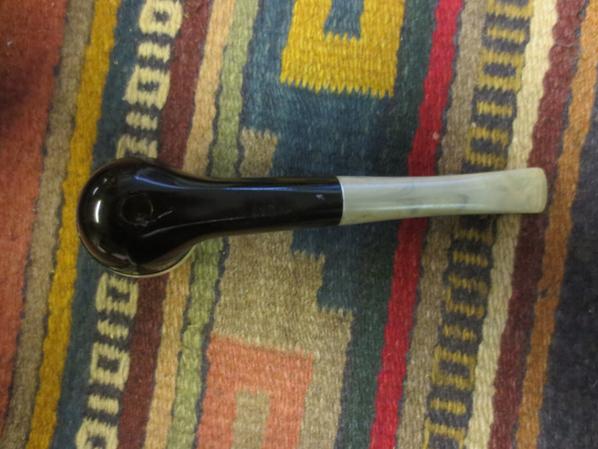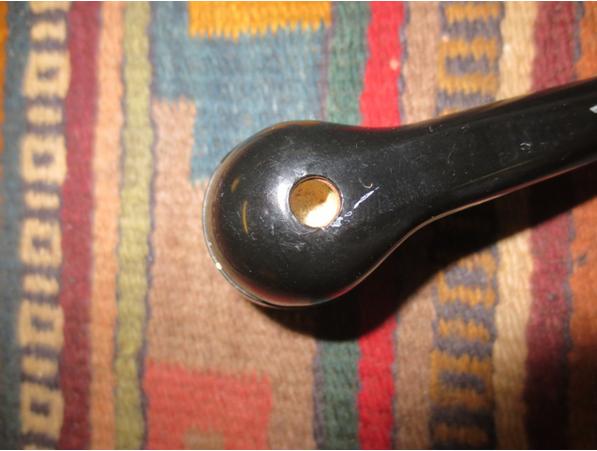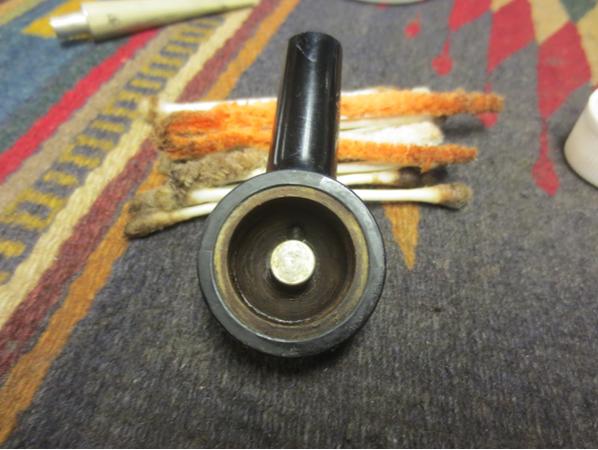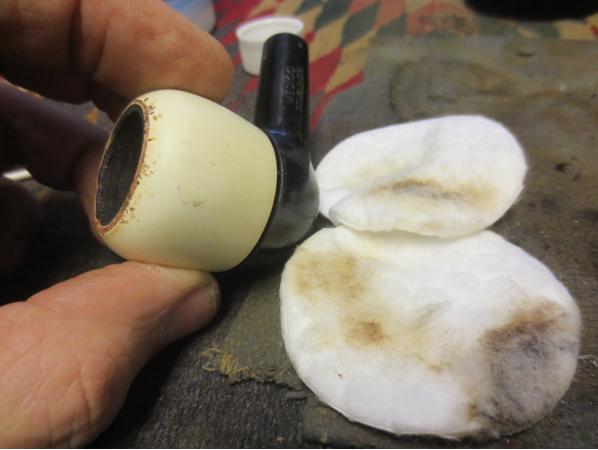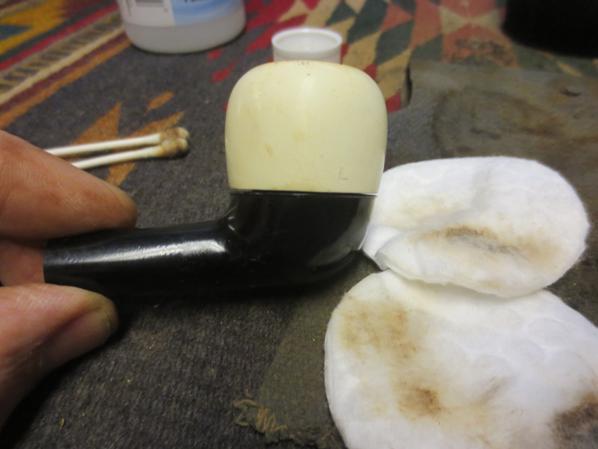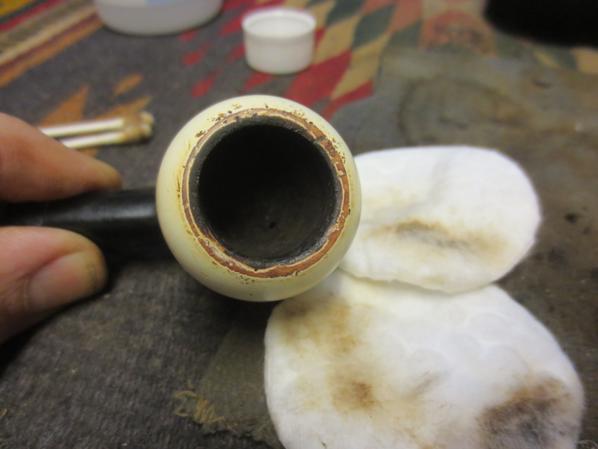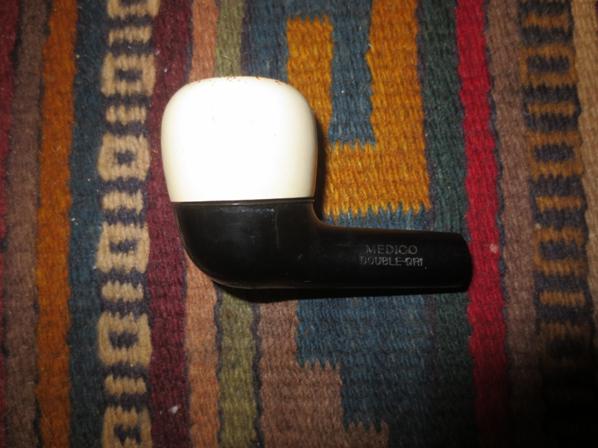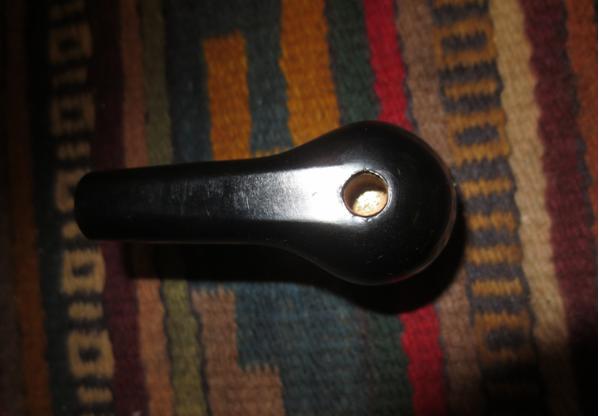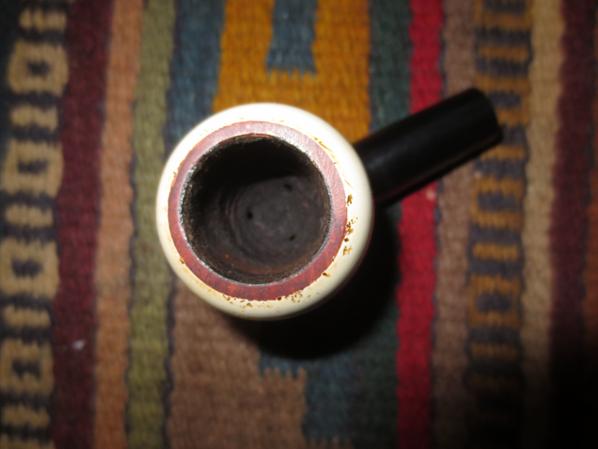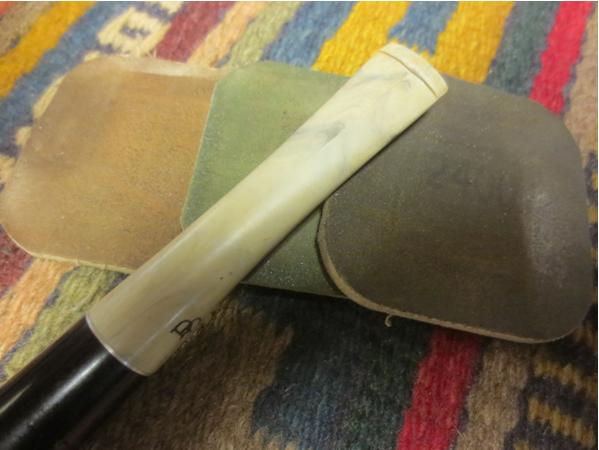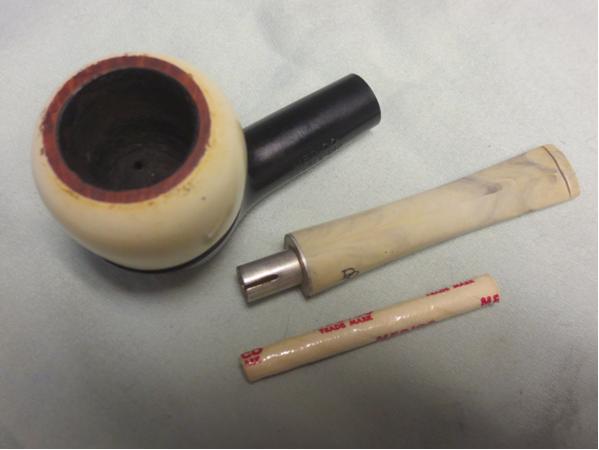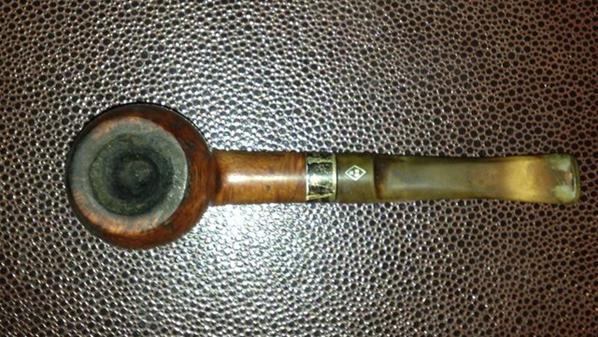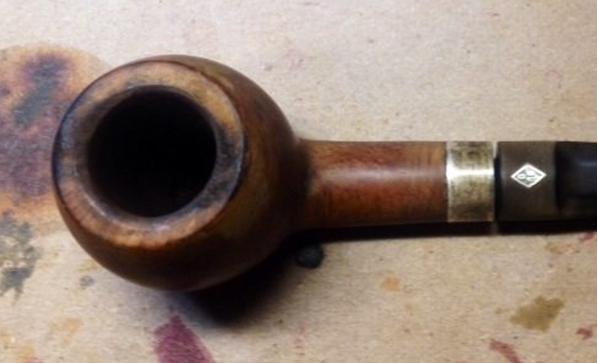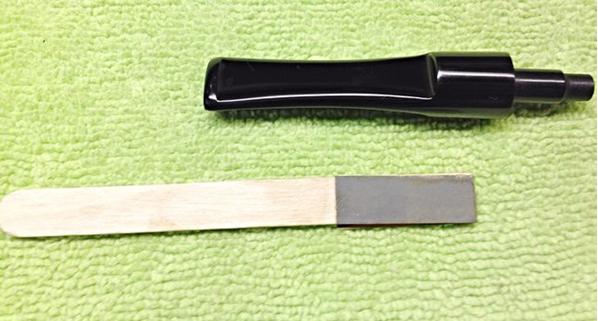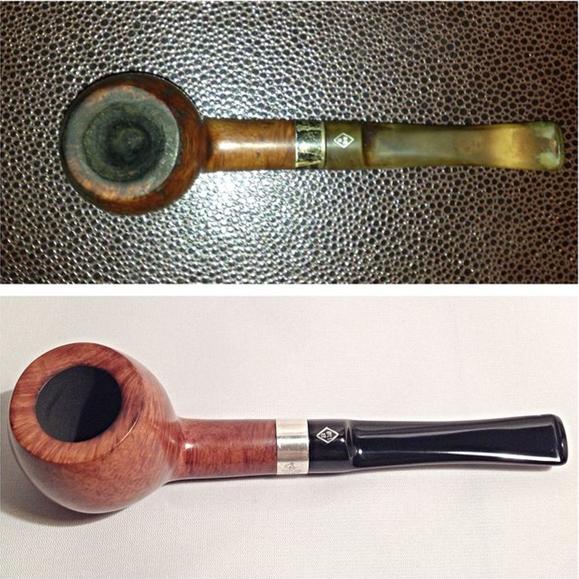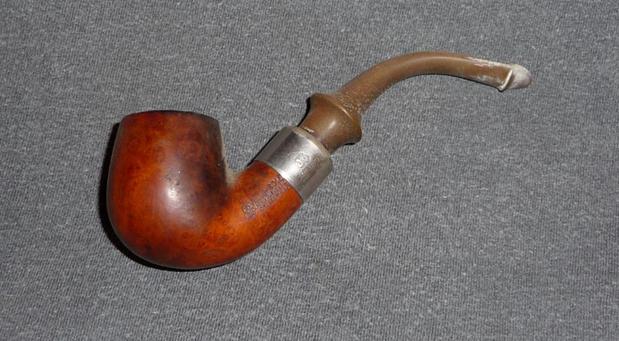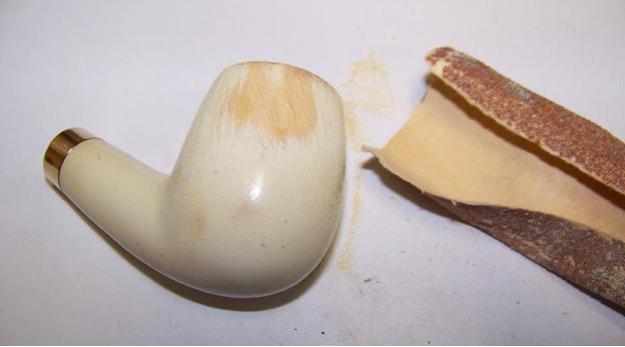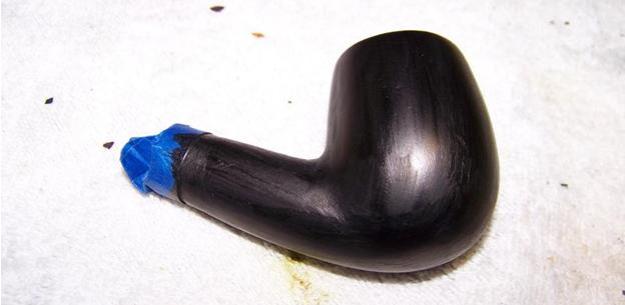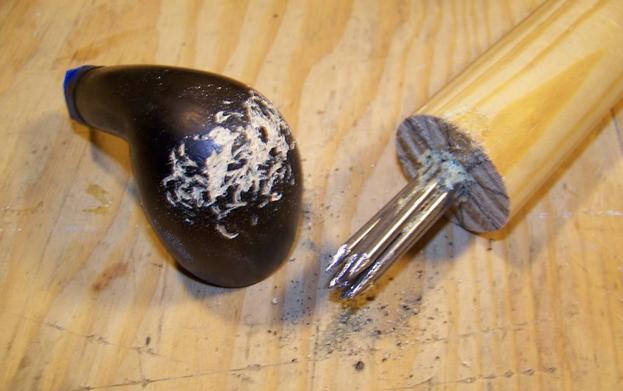Blog by Steve Laug
My brother Jeff found this homemade no name Walnut Billiard on eBay and was drawn to it. He has sent me more panel pipes than I have ever bought myself… the funny thing is that I am starting to really like them. This one is quite unique and almost a folk-art piece. It is a panel but the carver did not worry about making things symmetrical. All of the sides are different sizes. The rustication is quite nice and I like it – almost like the surface of a golf ball. The rim is smooth and the bowl is almost round. The pipe had a little cake building but not enough to keep. The pipe was stained with a bland tan coloured stain but there appeared to be remnants of red stain in some places. The sanding on the smooth parts was a little rough and there were scratch marks left behind by a file or some carving knife. The stem was good quality vulcanite and there was some buildup around the button and some oxidation. The fit of the stem to the shank was not good as the end of the shank was cut at an angle. The stem was also too large for the shank and neither the shank nor the stem was round. The tenon was also not round – it looked as if it had been sanded and was a little conical. The concept for the pipe was good but the execution left a lot of unfinished angles and left a mediocre handmade pipe.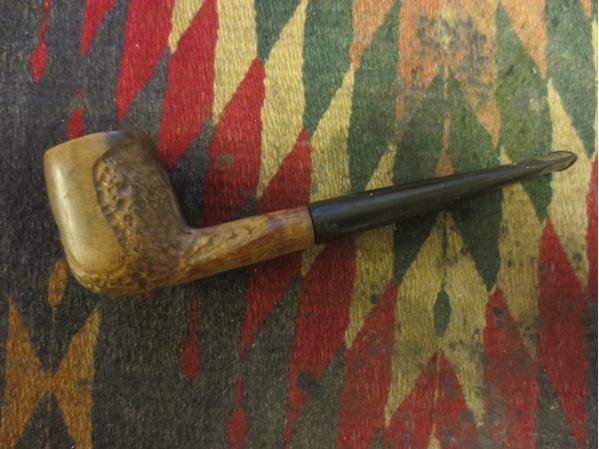


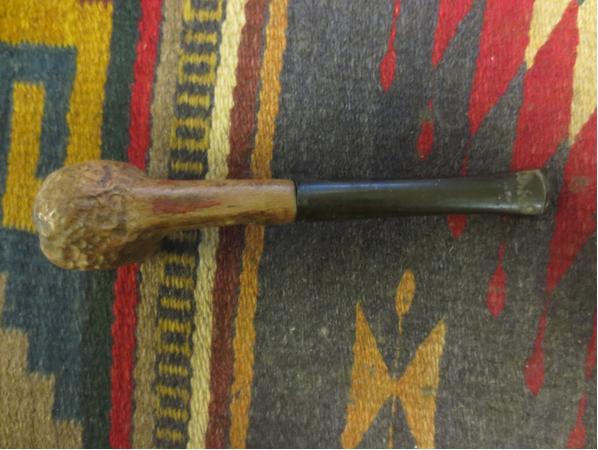 I took a close up photo of the shank/stem union to show what I am talking about when I say that they do not match.
I took a close up photo of the shank/stem union to show what I am talking about when I say that they do not match.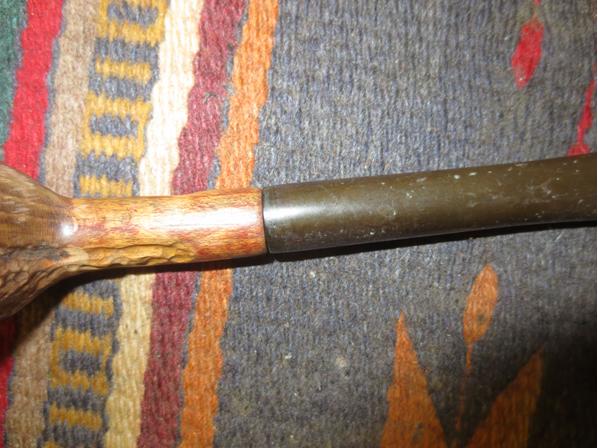 I have also included a photo of the bowl to show the “almost round” bowl. It looked as if the carver had tried to bevel the inner edge of the rim.
I have also included a photo of the bowl to show the “almost round” bowl. It looked as if the carver had tried to bevel the inner edge of the rim.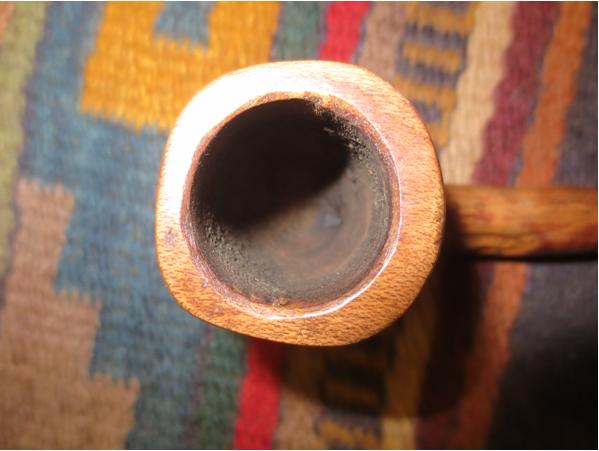 The stem was oxidized and had some spots and build up on the surface. At the stem/shank union it was rough and there were some deep scratches.
The stem was oxidized and had some spots and build up on the surface. At the stem/shank union it was rough and there were some deep scratches.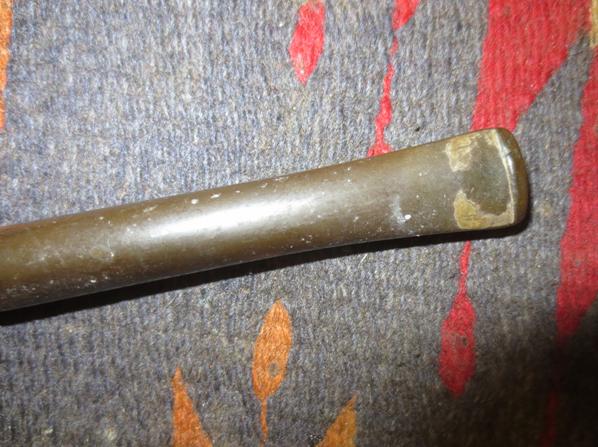 To take care of the bad angle on the shank I used the topping board to face the end. It squared up pretty neatly. The out of round shank and stem required something a little different. I decided to use a nickel band to break up the shank and stem union and give me a round edge to bring the stem against. That way I could at least make the stem round and clean up the junction. I used the Dremel and sanding drum to round out the shank enough to take the band. I smoothed out the flow of the shank to the bowl and round the top of the shank. Once I had the area sanded for the band I pressed the band lightly onto the shank and then heated the band with a heat gun. Once it heated and expanded I pressed it into place on the shank.
To take care of the bad angle on the shank I used the topping board to face the end. It squared up pretty neatly. The out of round shank and stem required something a little different. I decided to use a nickel band to break up the shank and stem union and give me a round edge to bring the stem against. That way I could at least make the stem round and clean up the junction. I used the Dremel and sanding drum to round out the shank enough to take the band. I smoothed out the flow of the shank to the bowl and round the top of the shank. Once I had the area sanded for the band I pressed the band lightly onto the shank and then heated the band with a heat gun. Once it heated and expanded I pressed it into place on the shank.
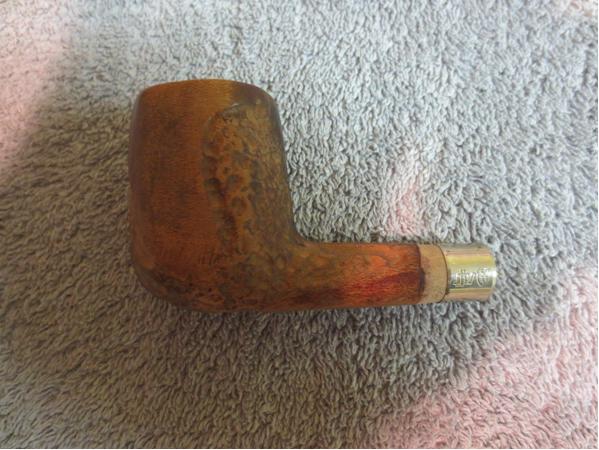

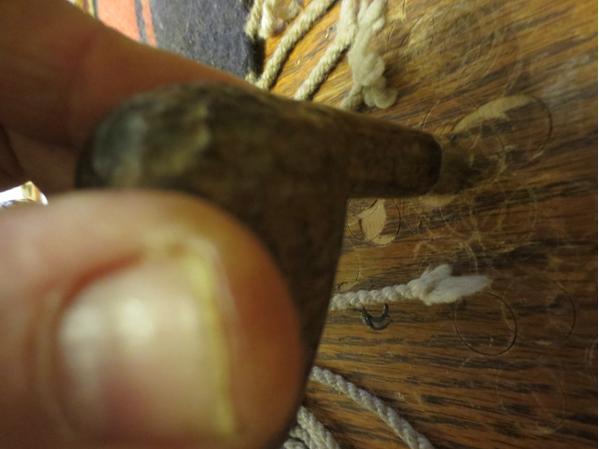 The band fit well with the shank and actually dressed up the pipe. I wiped the bowl down with acetone on cotton pads to remove the finish and prepare the bowl for a contrast stain.
The band fit well with the shank and actually dressed up the pipe. I wiped the bowl down with acetone on cotton pads to remove the finish and prepare the bowl for a contrast stain.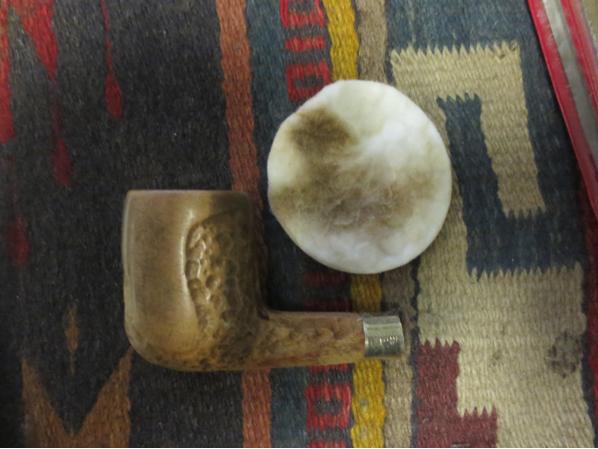

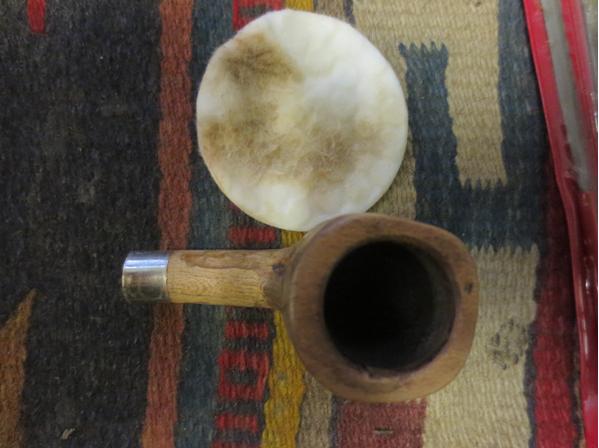
 I used a black Sharpie pen to colour/stain the rustication on the whole pipe. I wanted that portion of the pipe to contrast with the smooth portions of the walnut.
I used a black Sharpie pen to colour/stain the rustication on the whole pipe. I wanted that portion of the pipe to contrast with the smooth portions of the walnut.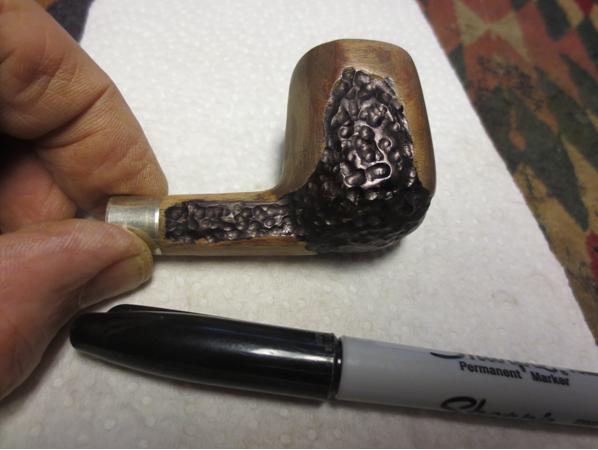

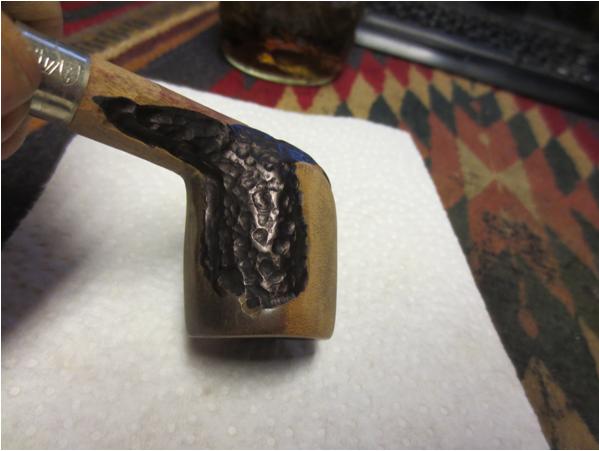 I wiped the bowl down with alcohol on cotton pads to lighten the shiny black of the Sharpie and dull it slightly. I then stained and flamed the bowl with a dark brown aniline stain mixed 50/50 with alcohol to make it more of a wash. I stained the entire bowl including the black portion to make sure to get stain into all of the grooves.
I wiped the bowl down with alcohol on cotton pads to lighten the shiny black of the Sharpie and dull it slightly. I then stained and flamed the bowl with a dark brown aniline stain mixed 50/50 with alcohol to make it more of a wash. I stained the entire bowl including the black portion to make sure to get stain into all of the grooves.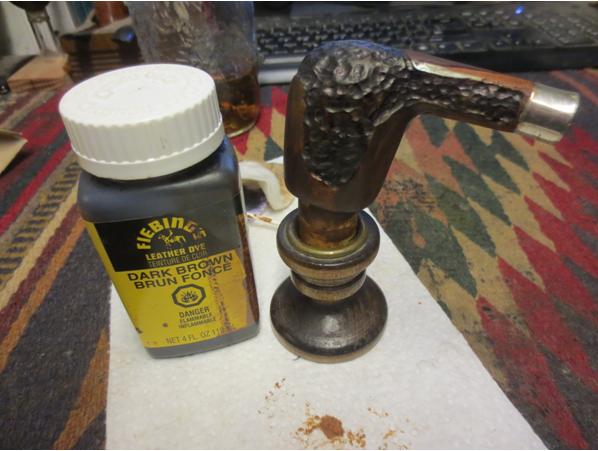

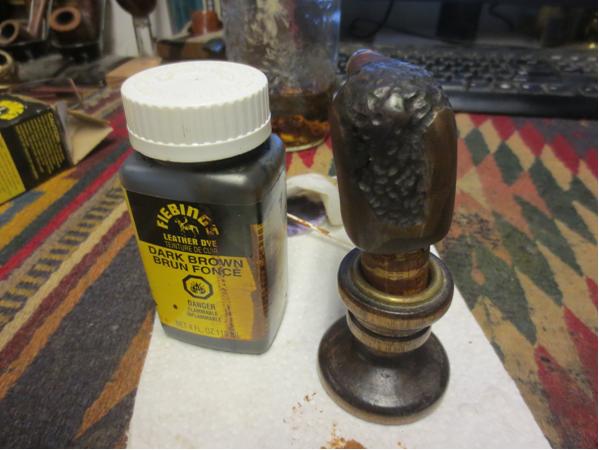 I buffed the bowl with Blue Diamond on the wheel paying particular attention to the smooth portions of the bowl. I wanted the contrast to be stark between the rusticated parts and the smooth parts.
I buffed the bowl with Blue Diamond on the wheel paying particular attention to the smooth portions of the bowl. I wanted the contrast to be stark between the rusticated parts and the smooth parts.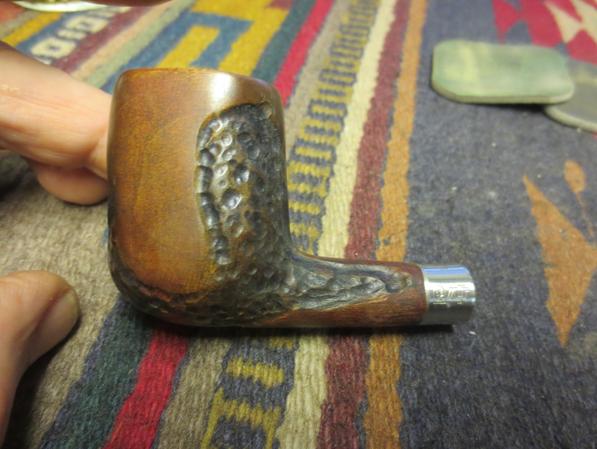
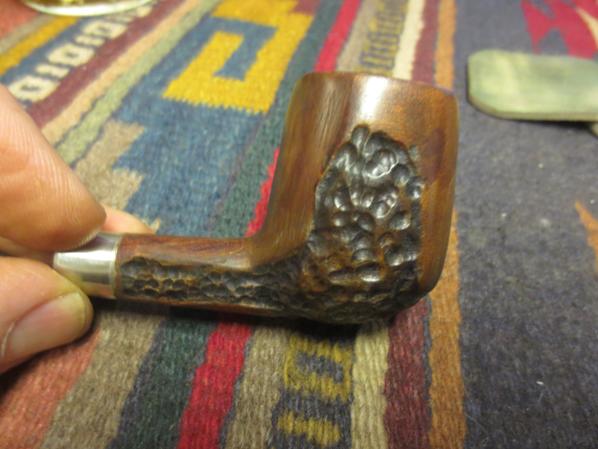


 I cleaned out the airway in the stem with pipe cleaners and alcohol. I was surprised with how clean it was.
I cleaned out the airway in the stem with pipe cleaners and alcohol. I was surprised with how clean it was.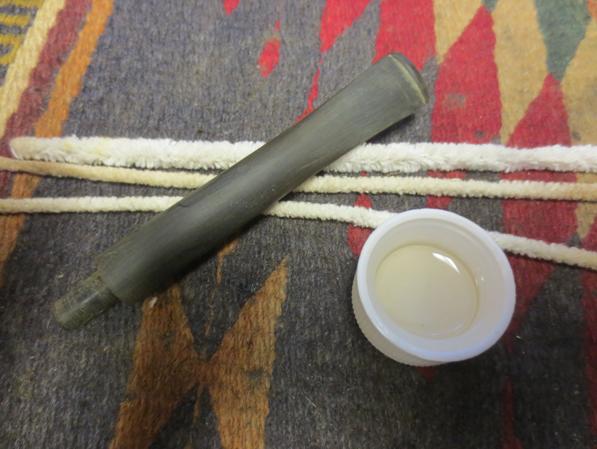 The carver who had fit the stem to the pipe had not finished working on the slot. It looked like he had started by using a small cutting wheel to cut a line across the airway in the end of the stem. That was all that had been done to the slot at this point.
The carver who had fit the stem to the pipe had not finished working on the slot. It looked like he had started by using a small cutting wheel to cut a line across the airway in the end of the stem. That was all that had been done to the slot at this point.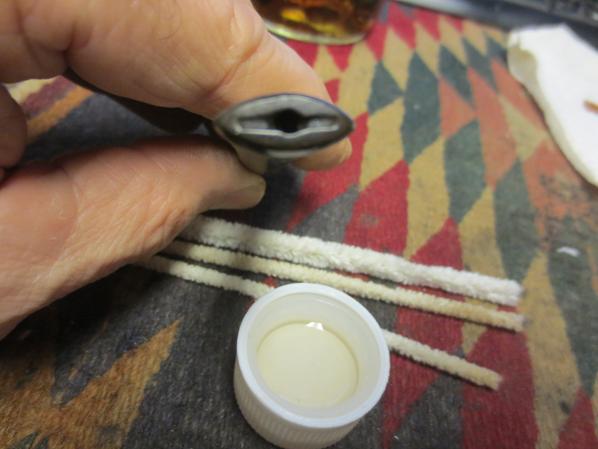 I used needle files and sandpaper to open up the airway and shape the slot. I smoothed out the transition from the cut to airway and made the entire slot more oval. The general shape of the airway is a Y with it following the curve of the button and creating an open airway. A pipe cleaner slides easily into the airway with the new open end.
I used needle files and sandpaper to open up the airway and shape the slot. I smoothed out the transition from the cut to airway and made the entire slot more oval. The general shape of the airway is a Y with it following the curve of the button and creating an open airway. A pipe cleaner slides easily into the airway with the new open end.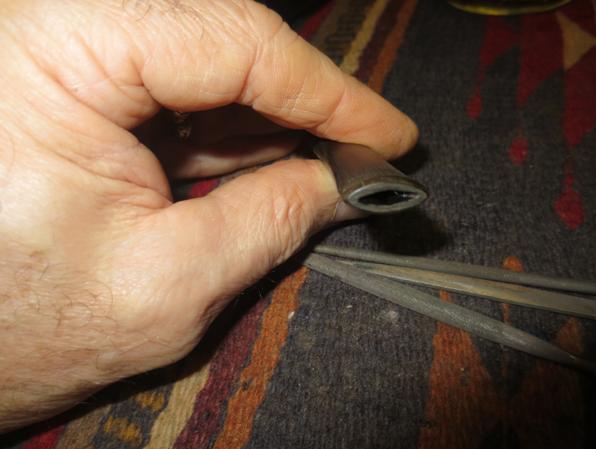 To prepare the mortise to accept the curve of where the tenon met the stem, I beveled the inside edge of the mortise with a knife. I also beveled the end of the tenon into a funnel while I had the knife out. When I pushed the stem into the shank it fit snugly against the end of the tenon.
To prepare the mortise to accept the curve of where the tenon met the stem, I beveled the inside edge of the mortise with a knife. I also beveled the end of the tenon into a funnel while I had the knife out. When I pushed the stem into the shank it fit snugly against the end of the tenon. I took out the stem and cleaned out the airway to the bowl and the mortise with pipe cleaners, cotton swabs and alcohol. I scrubbed it until it was clean.
I took out the stem and cleaned out the airway to the bowl and the mortise with pipe cleaners, cotton swabs and alcohol. I scrubbed it until it was clean.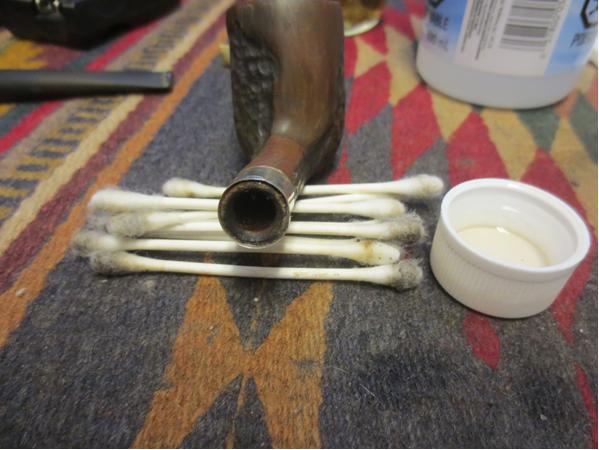 I sanded the stem with 220 grit sandpaper to break up the oxidation and also to remove some of the dings and marks on the stem surface. I wet sanded the stem with 1500-2400 grit micromesh sanding pads. I rubbed the stem down with Obsidian Oil and then dry sanded it with 3200-4000 grit pads. I gave it another coat of oil and then finished sanding with 6000-12000 grit pads. I gave it a final coat of oil and let it dry.
I sanded the stem with 220 grit sandpaper to break up the oxidation and also to remove some of the dings and marks on the stem surface. I wet sanded the stem with 1500-2400 grit micromesh sanding pads. I rubbed the stem down with Obsidian Oil and then dry sanded it with 3200-4000 grit pads. I gave it another coat of oil and then finished sanding with 6000-12000 grit pads. I gave it a final coat of oil and let it dry.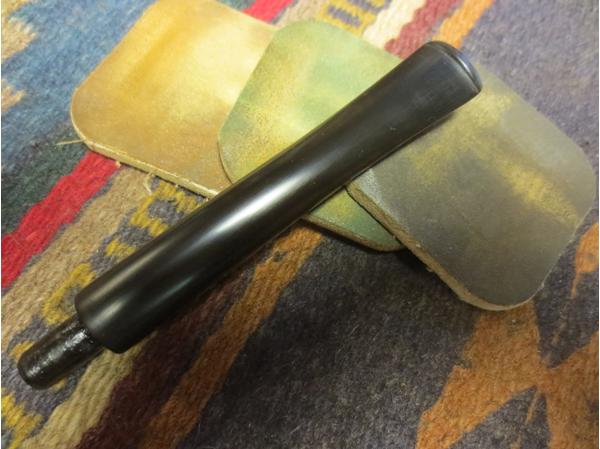

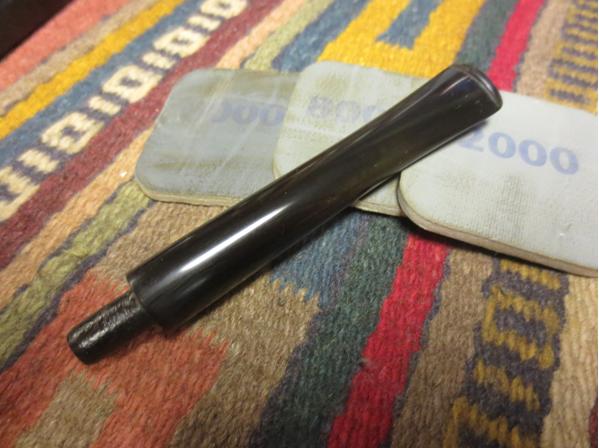 I sanded the smooth portions of the bowl with micromesh sanding pads to lighten the stain there. I lightly buffed the bowl and buffed a bit harder on the stem with Blue Diamond on the buffing wheel. I gave the stem multiple coats of carnauba wax and buffed it with a clean buff. I applied some Conservator’s Wax to the bowl and hand buffed it with a shoe brush. The finished pipe is shown in the photos below. It came out pretty well with the adjustments and tweaks that I added. The band sets off the bowl and stem. The contrast stain works with the walnut. The smooth and the rusticated finish go well with the stains I chose. It is now a better looking workable pipe. Thanks for looking.
I sanded the smooth portions of the bowl with micromesh sanding pads to lighten the stain there. I lightly buffed the bowl and buffed a bit harder on the stem with Blue Diamond on the buffing wheel. I gave the stem multiple coats of carnauba wax and buffed it with a clean buff. I applied some Conservator’s Wax to the bowl and hand buffed it with a shoe brush. The finished pipe is shown in the photos below. It came out pretty well with the adjustments and tweaks that I added. The band sets off the bowl and stem. The contrast stain works with the walnut. The smooth and the rusticated finish go well with the stains I chose. It is now a better looking workable pipe. Thanks for looking.